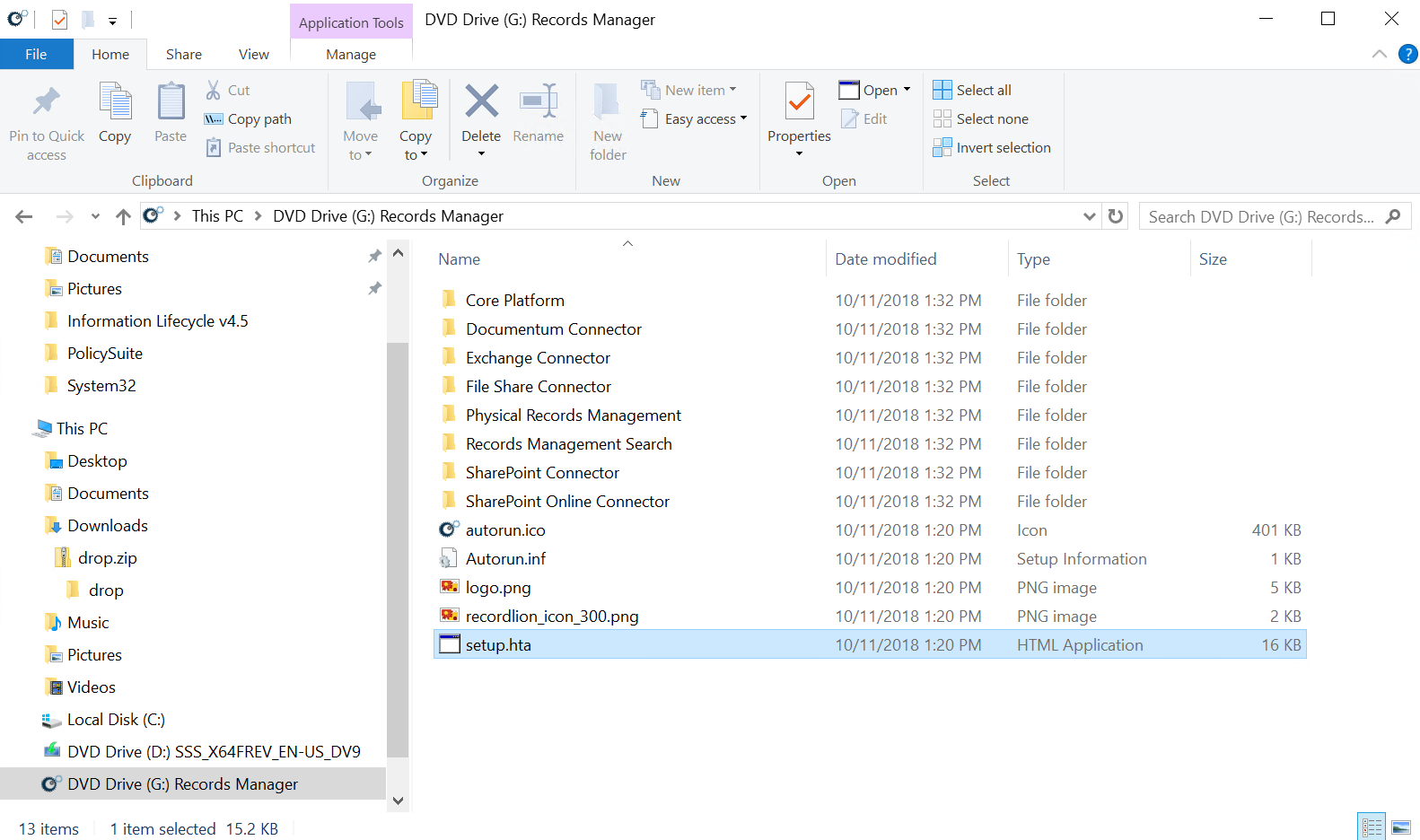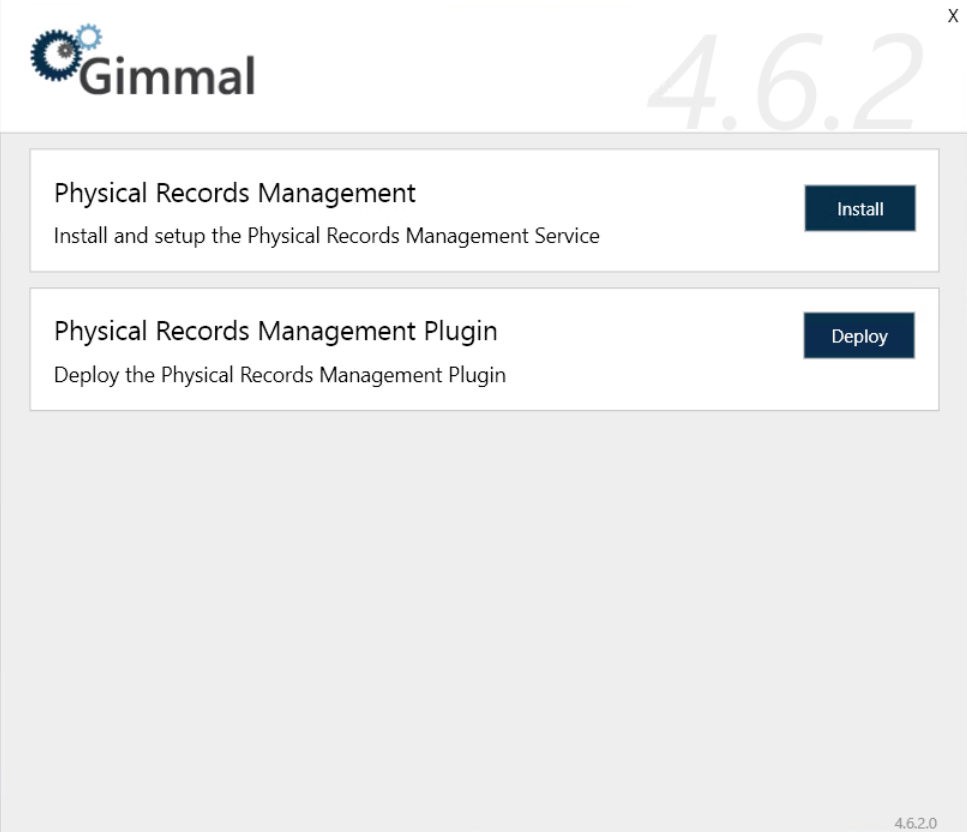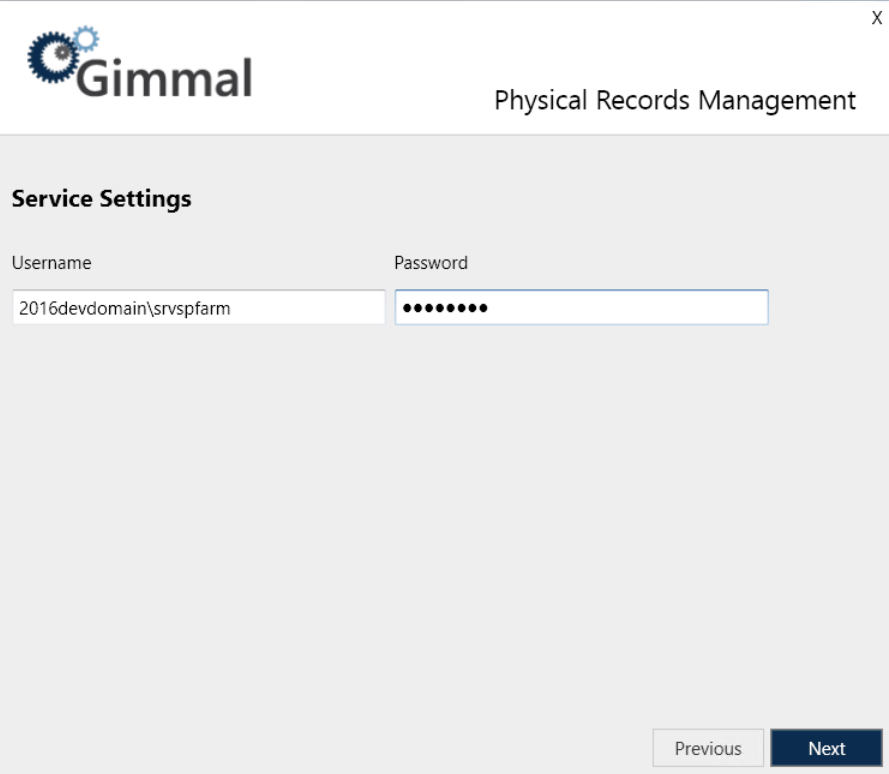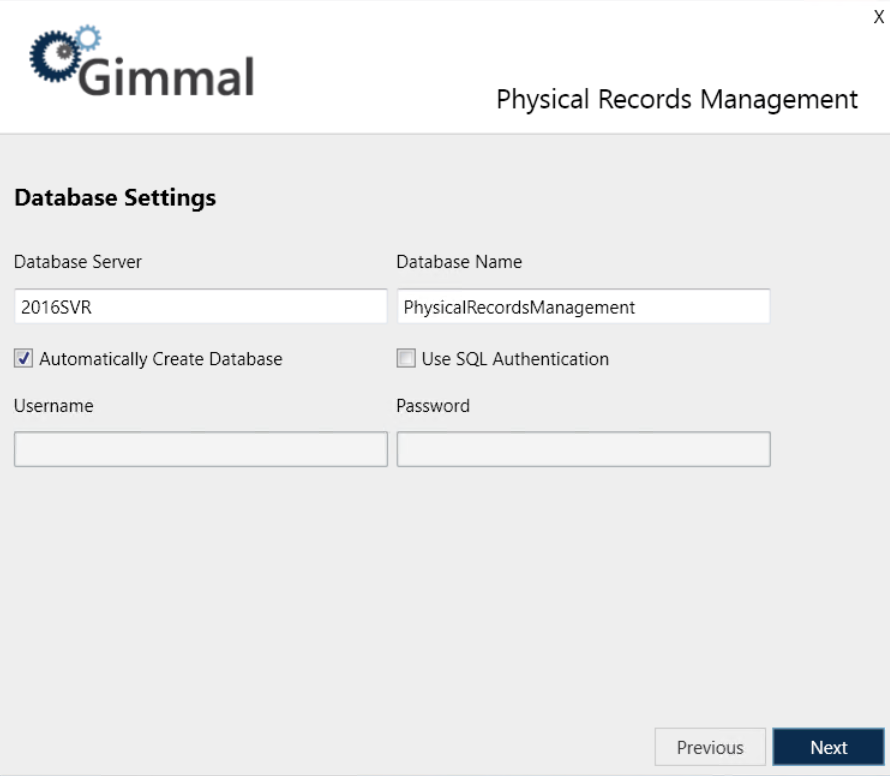Physical Records Management Installation
Installation Media
The installation media consists of a single ISO that contains everything necessary to install and set up Physical Records Management and other Records Management components.To initiate the setup process, regardless of the component, double-click the setup.hta file in the root folder of the ISO.

Ensure that you run the installer as the Local Administrator.
Upon initiating setup, the Records Management splash screen launches, which provides links to the Physical Records Management installation modules.

Installing Physical Records Management
To install Physical Records Management, perform the following steps:
From the Records Management splash screen, click the Install Physical Records Management link. The User Account Control window opens.
Click Yes to allow the installer to make changes to your computer. The Physical Records Management installation screen displays.
On the Physical Records Management installation screen, click Install to the right of the Physical Records Management option. The first screen that displays is the check for prerequisites. This screen validates the following information before allowing the installation to proceed:
The current user is Local Administrator
You have installed the required version of .NET
Click Next. The installation location screen displays, which determines where Physical Records Management will be installed.

Leave the installation path as the default, or to change it, click the ... icon next to the installation location field, select the desired installation location, and then click Next. The Service Settings screen displays.

Enter the following required information to specify which user account to use when you run the Windows Services:
Username (Ex. DOMAIN\Username)
Password
The user account must be a domain account and must have the following file system permissions:
Read/Write: %Install path%\Logs
Click Next. The Database Settings screen displays.

Enter/select the following database settings to determine the connection information that will be used by Physical Records Management to connect to SQL Server:
Database Server: The name of the SQL Server Install (ex. SERVERNAME\InstanceName)
Database Name: The name of the actual SQL Server Database (The default name for the database is “PhysicalRecordsManagement”, but you can change it here.)
Automatically Create Database: See description below
Use SQL Authentication: Specifies that the connection information should use SQL Authentication with the Username and Password indicated below
Username: The SQL Server username to use if SQL Authentication is specified
Password: The SQL Server password to use if SQL Authentication is specified
If SQL Authentication is not specified, the connection information will use Windows Authentication by specifying a trusted connection. This means that the Service account will be used to connect to SQL Server, therefore, this account will need the following database permissions. If SQL Authentication is specified, the SQL user will also require the following permissions.
db_datareader
db_datawriter
GRANT EXECUTE on all Stored Procedures
GRANT EXECUTE on all Scalar User Defined Functions
GRANT SELECT on all Table and Inline User Defined Functions
If Automatically Create Database is specified, the installation will automatically attempt to create the database using the Database Server and Database Name indicated. The appropriate account will also be automatically granted the appropriate rights to this database. This option requires that the current user has permission to create databases and manage security in the SQL Server instance indicated.
If Automatically Create Database is not specified, the installation will configure connection information but will not attempt to create the database. In this case, you will need to leverage the SQL Scripts at the following location to manually create the database in the SQL Server instance indicated: %Install Path\Gimmal\Physical Records Management\Service\Sql\
Run the scripts, in the order listed below, as a user who has database creation privileges on the desired SQL Server. You must also manually configure security, as indicated above.
RecordLion.RecordsManager.PhysicalAssets.sql
RecordLion.RecordsManager.PhysicalAssets.Optimize.sql
RecordLion.RecordsManager.PhysicalAssets.Seed.sql
Click Next to perform the final installation using the database settings you specified above. The progress bar indicates the state of the installation.
When the application finishes installing, click Next to continue to the final screen. The final screen indicates that everything installed successfully.
If you experience any errors during the installation process, refer to the installer log in your Windows Temp folder.
Click Finish to return to the main Setup screen, which should now indicate that Physical Records Management was installed successfully.
After you finish the installation, you must perform the following steps to run the newly installed Windows Services.
Open the Windows Services Manager.
In the Services window, verify that the Gimmal Physical Records Management Service is listed.
Right-click on the service and select Start. When the service begins, the Status column will display "Running".
Using the SQL Server Management Studio, connect to the SQL database and navigate to the Databases folder. (The database you applied settings to in step 8 is located under this Databases folder.)
Verify the PhysicalRecordsManagement (or the name you provided) database is listed.
Expand the nodes: PhysicalRecordsManagement > Security > Users, and verify that the Service/User account that was created during the installation steps above is listed and has the correct permissions.
Exit out of the SQL Server Management Studio with saving anything.
Continue with the next topic, Installing the Physical Records Management Plugin.
Installing the Physical Records Management Plugin
To install the Physical Records Management plugin, perform the following steps:
On the Physical Records Management installation screen, click Deploy to the right of the Physical Records Management Plugin option. The first screen that displays is the check for prerequisites. This screen validates the following information before allowing the installation to proceed:
The current user is Local Administrator
You have installed .NET Framework 4.5
Click Next to perform the final deployment using the database settings you specified above. The progress bar indicates the state of the deployment.
When the application finishes deploying, click Next to continue to the Finish screen. This screen indicates that everything deployed successfully.
If you experience any errors during the deployment process, refer to the installer log in your Windows Temp folder.
Click Finish to return to the Physical Records Management installation screen. (Note that the Deploy button will not be grayed out like the Installed button is.)
Continue with the next section, Configuring Physical Records Management, to begin the configuration process.
